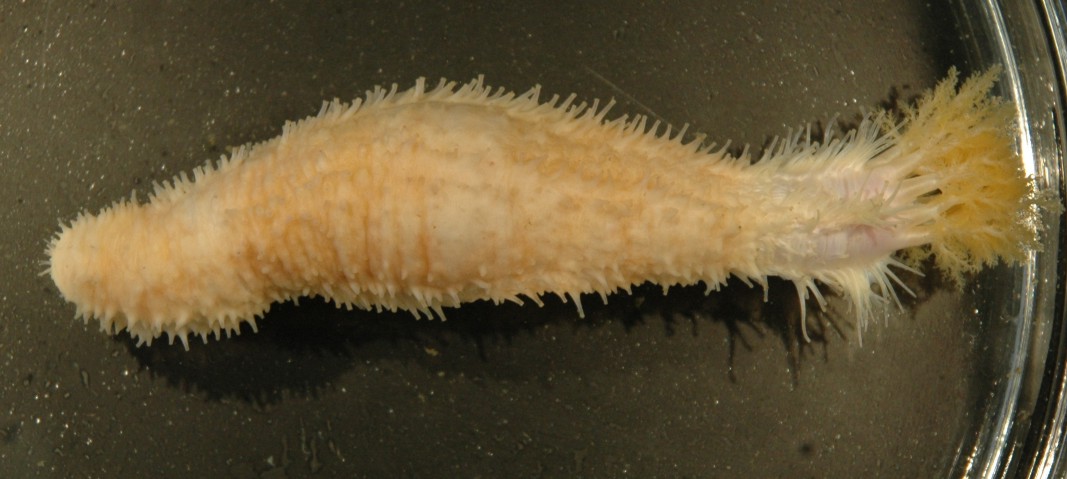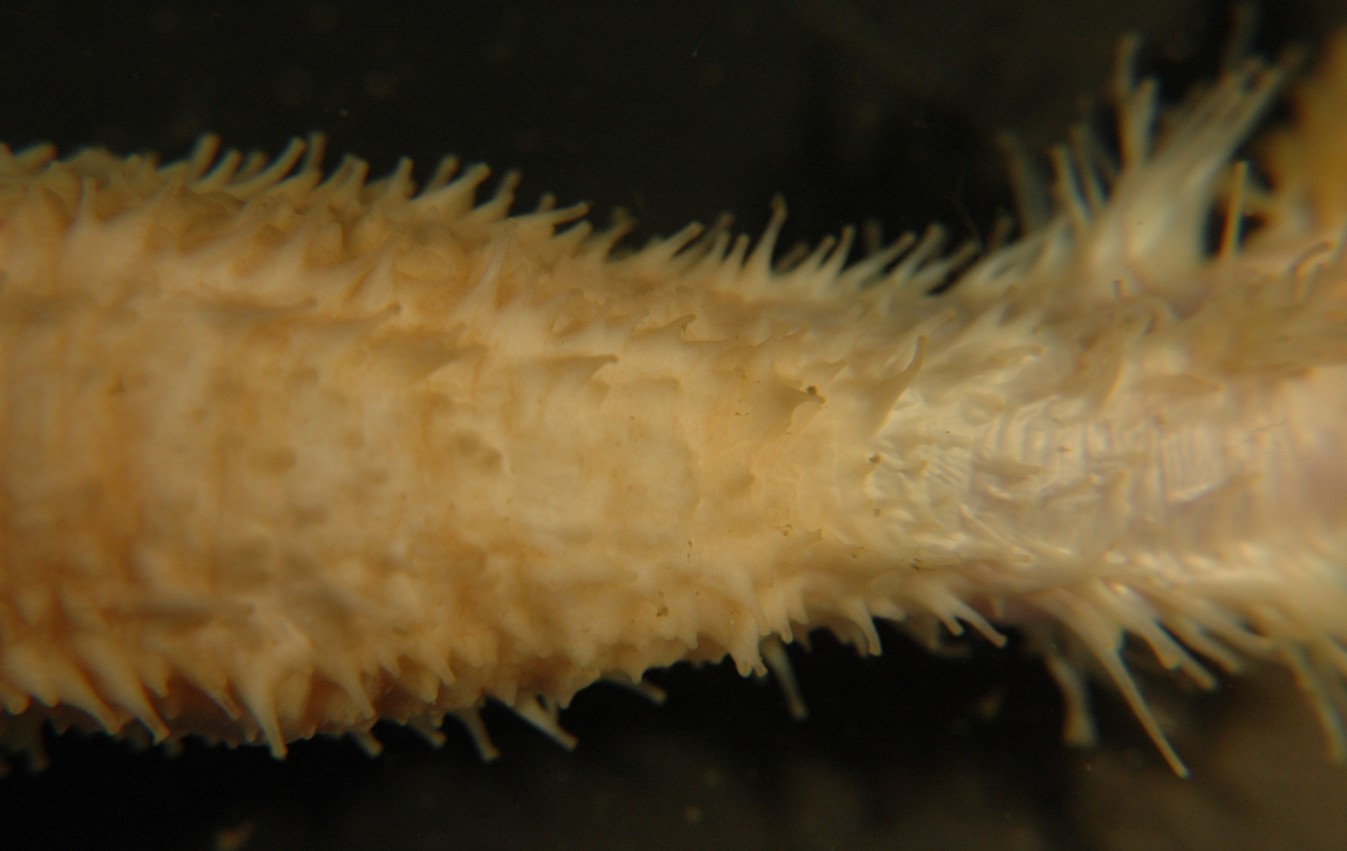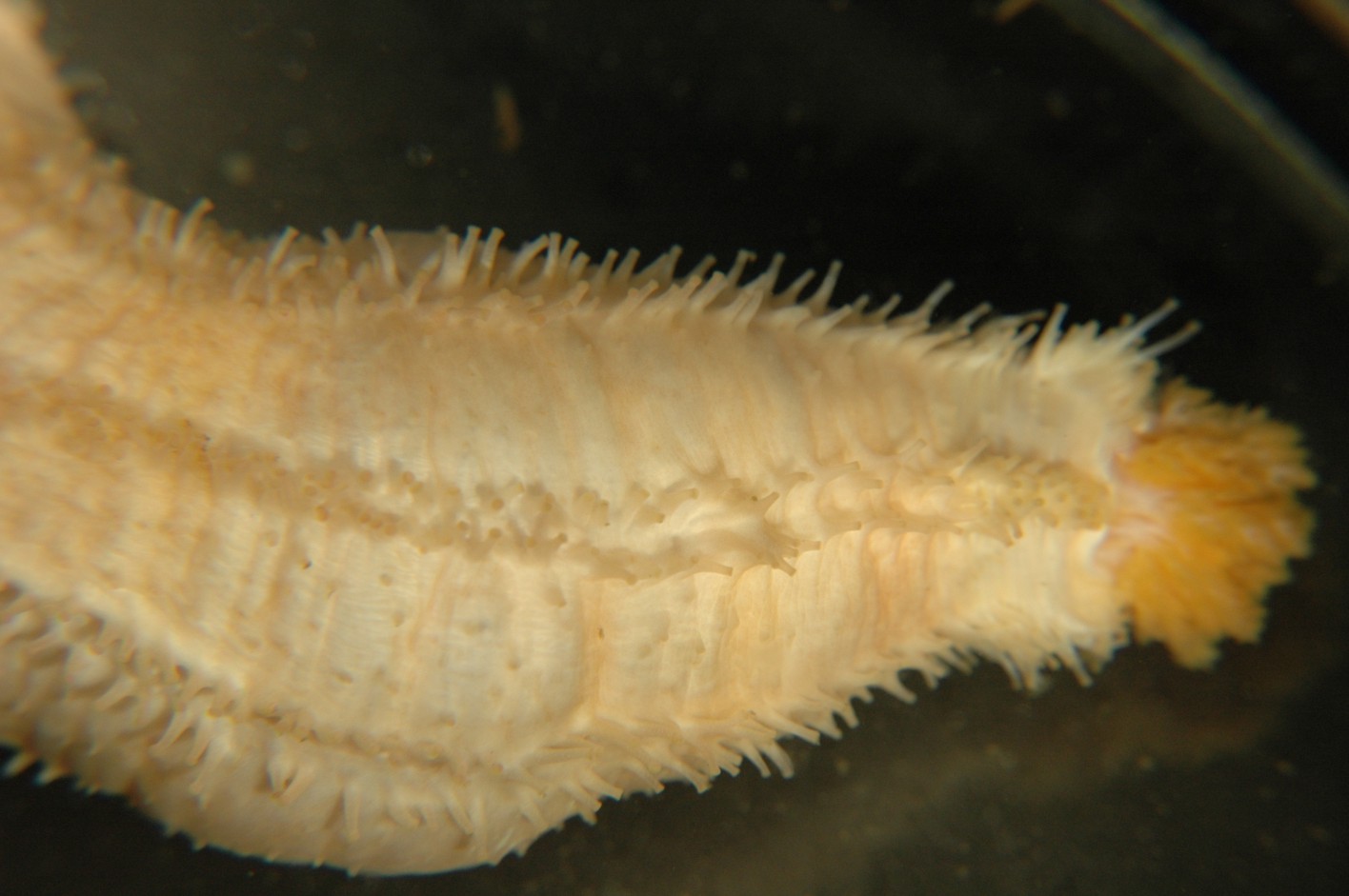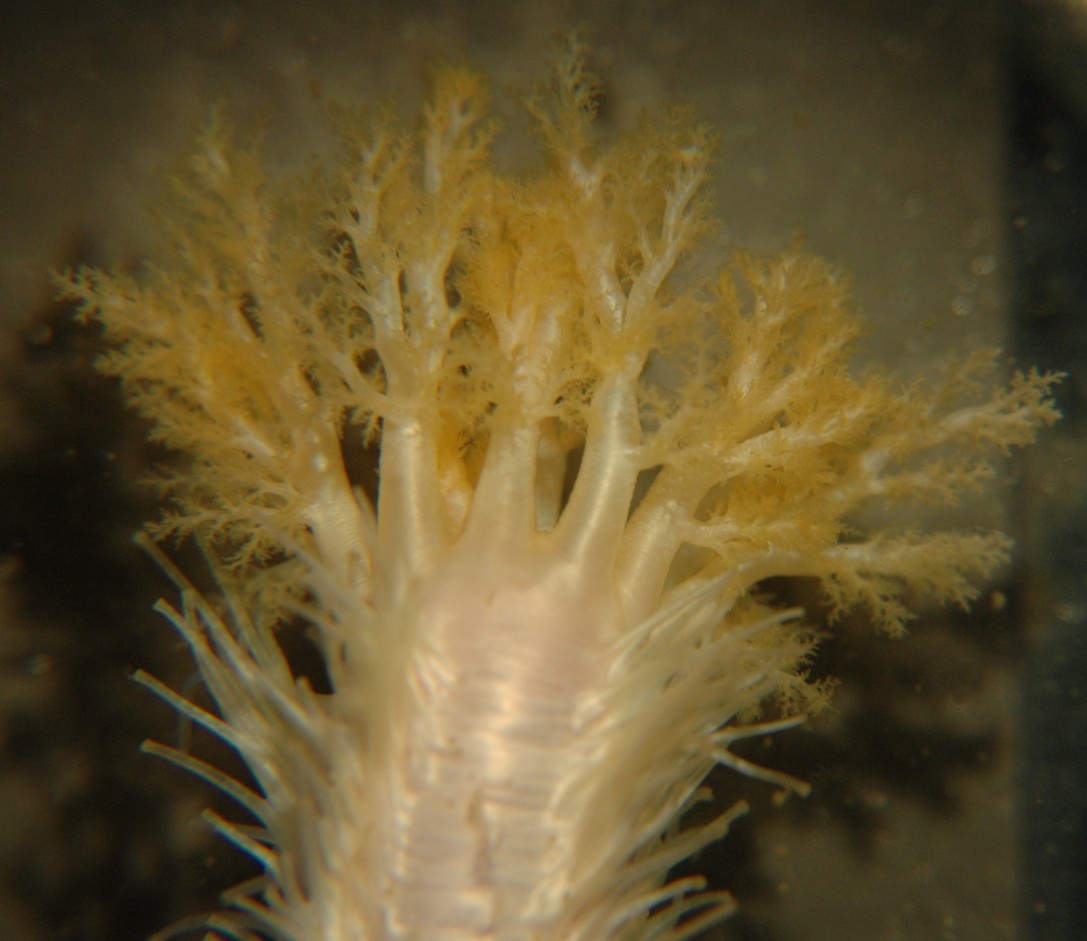Cucumaria pallida Kirkendale and Lambert, 1995Common name(s): Pallid cucumber |
|
| Synonyms: Formerly thought to be a pale form of Cucumaria miniata. Has also been called Cucumaria fallax. |  |
| Phylum Echinodermata
Class Holothuroidea Order Dendrochirotida Family Cucumariidae |
|
| Cucumaria pallida from about 10 m depth, Sares Head. About 12 cm long. | |
| (Photo by: Dave Cowles, July 2006) | |
How to Distinguish from Similar Species: This species looks most similar to Cucumaria miniata, of which it formerly was thought to be a pale variant. C. miniata has more robust, orange or brown buccal tentacles and its body is also orange or brown. C. miniata averages 45 madreporic bodies internally while C. pallida averages 9.
Geographical Range: Auke Bay, Alaska to Santa Rosa Island, CA.
Depth Range: Low intertidal to 91 m (mostly from 11-20 m)
Habitat: Under rocks and cobble
Biology/Natural History: This species lives mostly buried in the cracks between subtidal cobble. It suspension feeds by extending its buccal tentacles up into the water column. Spawning is from mid March to early May. Females release strands of eggs which later break up. The eggs are about 1/2 mm diameter.
| Return to: | |||
| Main Page | Alphabetic Index | Systematic Index | Glossary |
References:
Dichotomous Keys:Kozloff 1987, 1996
Lambert, 1997
General References:
Scientific Articles:
Kirkendale, L. and P. Lambert, 1995. Cucumaria pallida, a new
species of sea cucumber from the northeast Pacific Ocean
(Echinodermata:
Holothuroidea). Canadian Journal of Zoology 73: 542-551
McEuen, F.S., 1986. The reproductive biology and development of twelve species of holothuroids from the San Juan Islands, Washington. Ph.D. thesis, University of Alberta (as C. fallax)
McEuen, F.S., 1987. Phylum Echinodermata, Class Holothuroidea. Pp. 574-596 in Strathmann, M.F. (ed), Reproduction and development of marine invertebrates of the northern Pacific coast.. University of Washington Press, Seattle, WA
McEuen, F.S., 1988. Spawning behaviours of northeast Pacific sea cucumbers (Holothuroidea: Echinodermata). Marine Biology (Berlin) 98: 565-585
Web sites:
General Notes and Observations: Locations, abundances, unusual behaviors:
| The ambulacral rows are more ordered on the ventral side than on the dorsal side. | |
 |
 |
| Dorsal ambulacral rows | Ventral ambulacral rows |

The 10 equal buccal tentacles in this species are paler and less robust
than in Cucumaria
miniata.
Authors and Editors of Page:
Dave Cowles (2006): Created original page